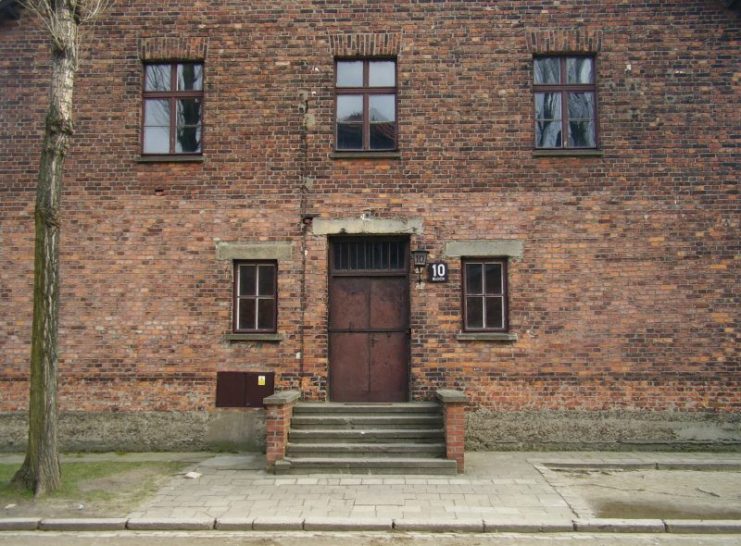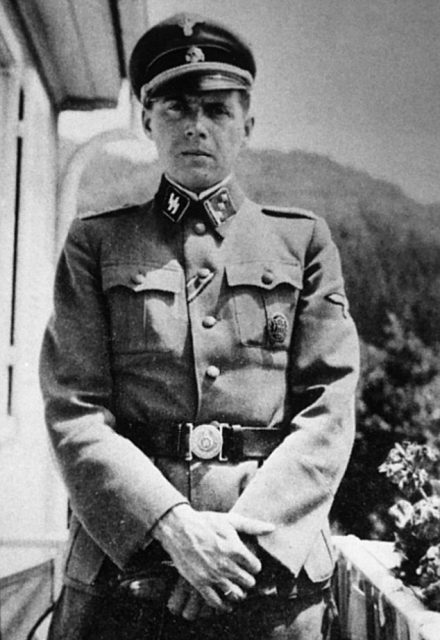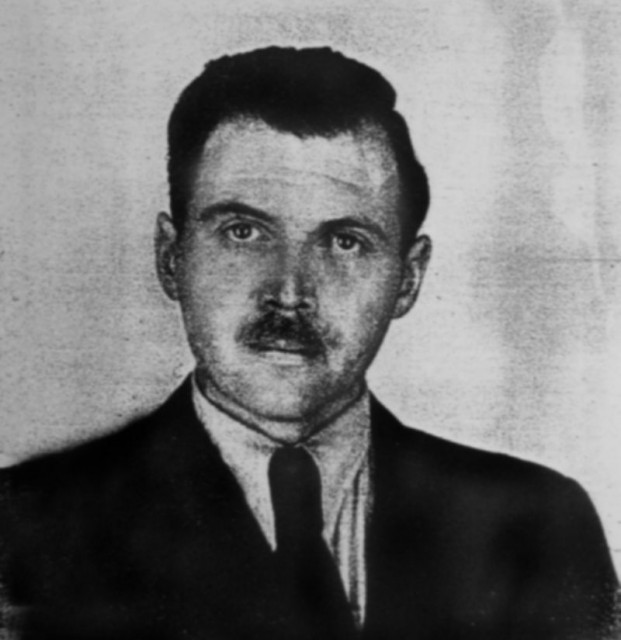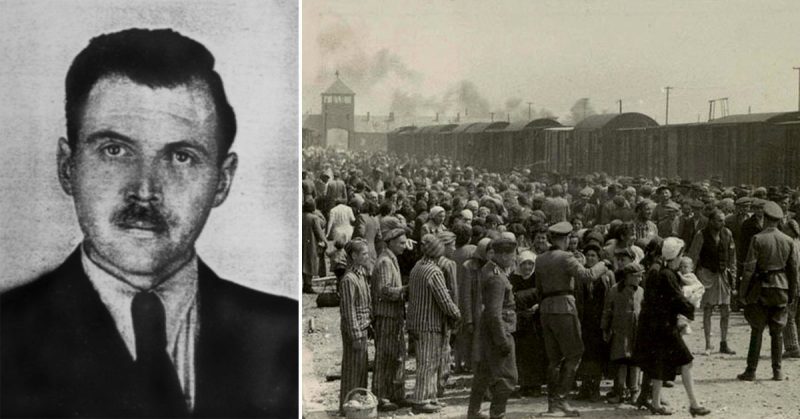An Israeli man, Yitzchak Ganon, had his life saved by heart specialists after refusing to visit medical professionals for a total of 64 years. While being treated the specialists learned of Yitzchak’s mistrust of doctors and the awful secrets behind it.
Following surgery at a hospital close to Tel Aviv, Yitzchak was informed (as he came to from the anesthetic) that he had only one kidney remaining. His response was ‘I know, the last time I saw the other one, it was throbbing in the hand of a man named Josef Mengele. He was a doctor too’.
Following this statement Yitzchak then revealed, to his amazed loved ones, the reasons why he had never visited a doctor for 64 years, since freed from Auschwitz in January 1945. His family was unaware of the suffering he’d been through at the camp, at the hands of Josef Mengele (now infamous due to his treatment of prisoners).
Yitzchak was deported to Auschwitz in 1944, along with his parents and five siblings, all because they were Greek Jews. His father died during travel to the camp and once there his siblings and mother were gassed within hours.
Mengele met the transport, as he did with all that arrived at Auschwitz, and handpicked Yitzchak to experiment upon. A tattoo was inked on Yitzchak’s lower arm; the number ‘182558’ and then Mengele (known as the Angel of Death by his victims) strapped Yitzchak to an operating table.
Yitzchak describes ‘He cut into me, without anesthetic. The pain was indescribable. I felt every slice of the knife. Then I saw my kidney pulsating in his hand. I cried like a madman; I cried out the prayer; ‘Hear, O Israel: the Lord our God, the Lord is one….’ And I prayed to die, that I might not suffer this agony anymore.’

Sadly for Yitzchak, Mengele was not done with him. Mengele’s quest is now famous – he aimed to clone perfect men (SS-supermen) for his leader the Fuehrer. Yitzchak goes on to explain ‘After the operation I was given no painkillers and put to work. I cleaned up after the other bloody operations carried out by Mengele’.
Six months had passed before Yitzchak was called back by Mengele. This time, he immersed Yitzchak in a tub full of freezing water and intermittently monitored him; the reason given by Mengele was to check on the function of his lungs.
Following this event, Yitzchak tells us ‘then I was selected for gassing because my body was no longer of any use to them.’ He was sent to the gas chamber and was the 201st man there. However, the chamber only held 200, so Yitzchak was spared.
Once Auschwitz was freed Yitzchak returned to Greece and managed to reunite with one sister and one brother, who had managed to survive the SS round-ups. In 1949 they emigrated from Greece to Israel.
The Hunt for Mengele
The Director of the Mossad (which is the Israeli Intelligence Agency), Isser Harel, personally led an attempt in Buenos Aires to take into custody, Adolf Eichmann. This was in May 1960 and was a successful mission. Harel also hoped to find Mengele, so that he could stand trial in Israel for his crimes. During interrogation Adolf Eichmann gave up an address, this was a safe house for Nazi’s on the run from the law.

Surveillance was placed on this house. However, neither Mengele nor his close family was seen coming or going from this address. They spoke to the local postman who told them that Mengele had indeed been getting letters delivered there, however, had now moved and left no forwarding address. Harel found a local machine shop that had been part-owned by Mengele; however, there were no leads following that visit either so he gave up.
West Germany had provided legal documents to Mengele that had his real name listed on in 1956, so that he could reside in Argentina. However, W. Germany offered a large reward for Mengele’s capture despite providing those documents. News articles were everywhere, ones that told of Mengele’s crimes, along with images of him, and this forced Mengele to relocate once again in 1960.
Hans-Ulrich Rudel (an ex-bomber pilot) helped Mengele get in touch with Wolfgang Gerhard (famed Nazi supporter), and Wolfgang assisted Mengele in crossing the border to Brazil.
Once in Brazil, Mengele resided with Wolfgang near Sao Paulo, on a farm he owned, while looking for somewhere more permanent to reside along with Geza and Gitta Stammer (Hungarian ex-pats). The Stammers purchased a farm holding in Nova Europa, with the help of an investment made by Mengele and gave him a job as farm manager. The three of them banded together to purchase another farm (cattle and coffee) in Serra Negra; each owned a half share, half to the Stammers and half to Mengele.
The Stammers were under the belief that Mengele was in fact ‘Peter Hochbichler’ after being told so by Wagner, however, in 1963 they discovered who he truly was. After making this discovery, Wolfgang convinced the Stammers not to report the whereabouts of Mengele, stating they would be in trouble themselves for harboring a fugitive. Meanwhile, West Germany had received a tip that Mengele was residing in Brazil in February 1961 and so expanded its extradition request to include that country.
Zvi Aharoni, who was one of the original Mossad agents tasked with bringing Adolf Eichmann in, was given the lead role of locating Mengele, along with a team of agents – their aim was to locate and capture so that Mengele could stand trial in Israel. They carried out inquiries in Paraguay. However, no clues were found as to Mengele’s location, and they could not intercept any letters or other correspondence between Mengele and Martha (his wife, who was residing in Italy).

There were agents following Hans-Ulrich Rudel, but this did not provide any information either. Zvi Aharoni and other members of the team then followed Wolfgang to an area near Sao Paulo, while here they found a European man whom they believed to actually be Mengele. Aharoni told his suspicions to Issar Harel, but they decided to stop the operation in 1962. They deemed it to be too costly to continue; they had other priorities such as repairing their relationship with Egypt which was deteriorating.
In 1969 the Stammers and Mengele purchased a property on farmland in Caieiras, again Mengele owned half, and the Stammers owned the other half. Wolfgang was forced, in 1971, to return to Germany as his wife and son were seriously ill, and they required medical treatment. Before Wagner left, he left his own identity card with Mengele. In late 1974, the Stammers fell out with Mengele and purchased a house without him in Sao Paulo.
They also purchased a bungalow, to rent to Mengele, in Eldorado. Mengele’s son, Rolf, visited his father at this property in 1977 (after having not seen him since 1956) and found that Mengele was unrepentant of his crimes, still a Nazi at heart and claimed to have never harmed anyone personally but did his duty only.
Mengele’s health was going downhill; it had been deteriorating since back in 1972 and led to him having a stroke in 1976. He suffered from high blood pressure as well as an ear infection; this infection impacted his balance.
On February 7th, 1979 Mengele was visiting friends in Bertioga (Wolfram and Liselotte Bossert) and, while swimming, had another stroke and drowned. Mengele was buried under a false name ‘Wolfgang Gerhard’ due to him using Wolfgang’s identity card since 1971. His burial place was Bertioga.
